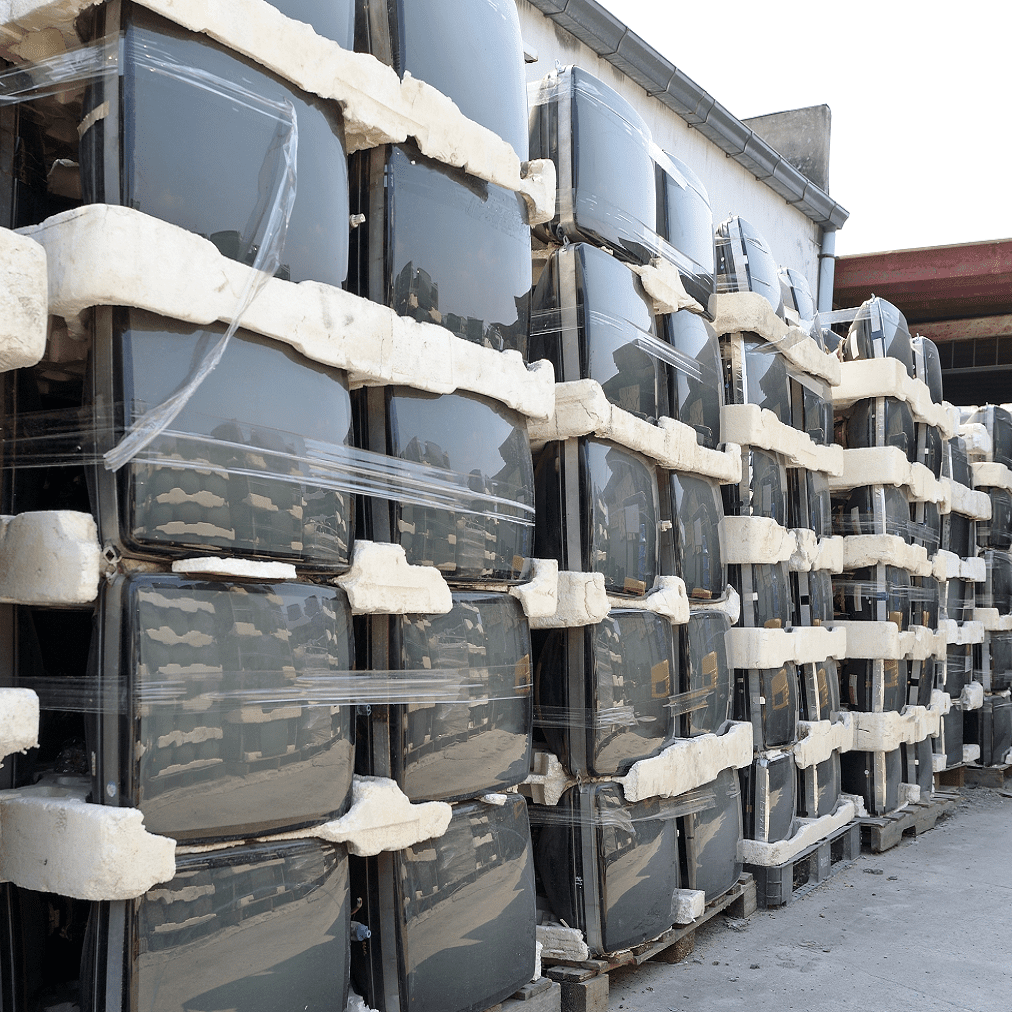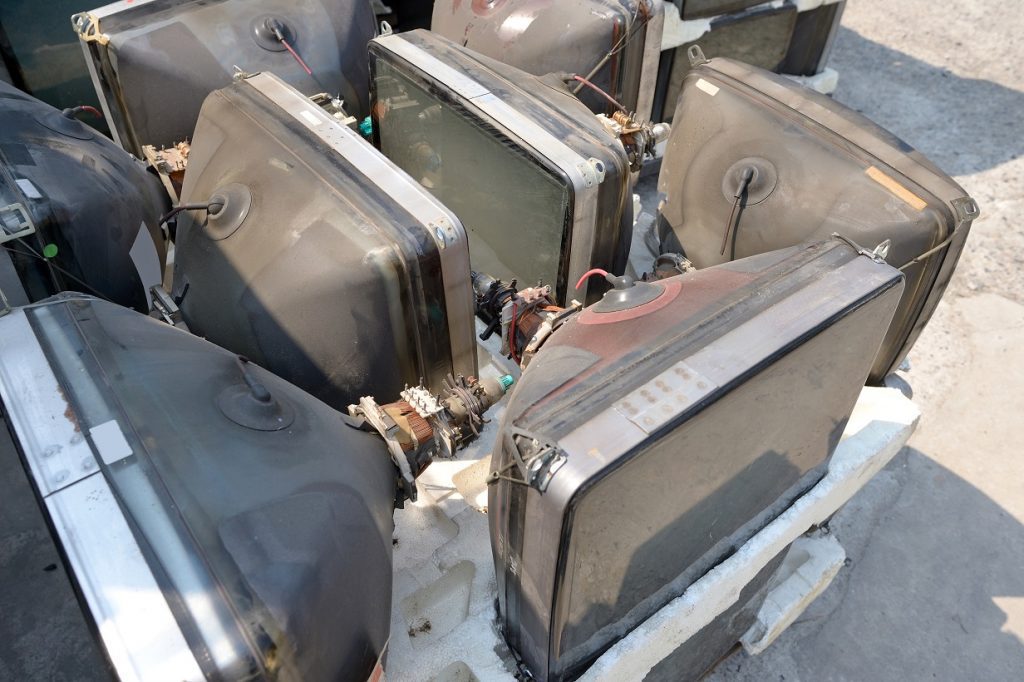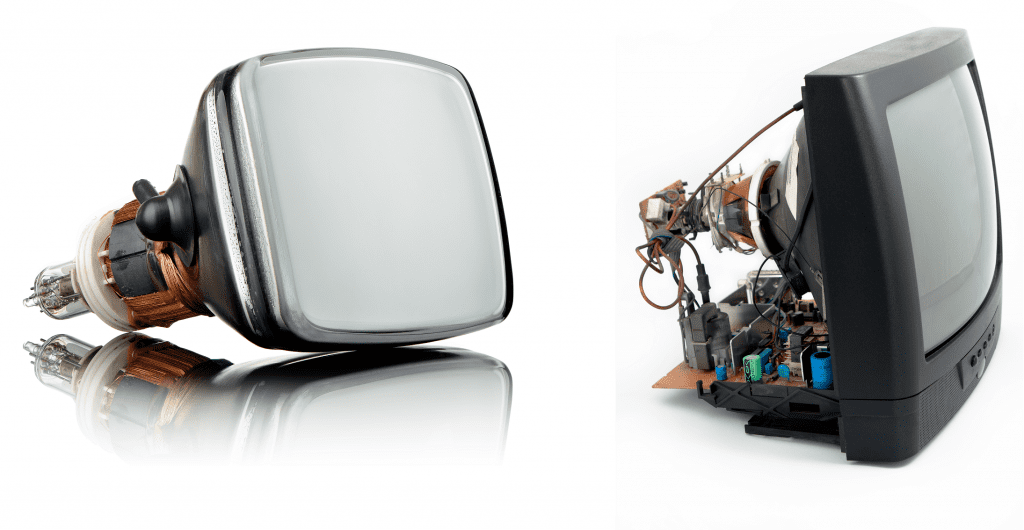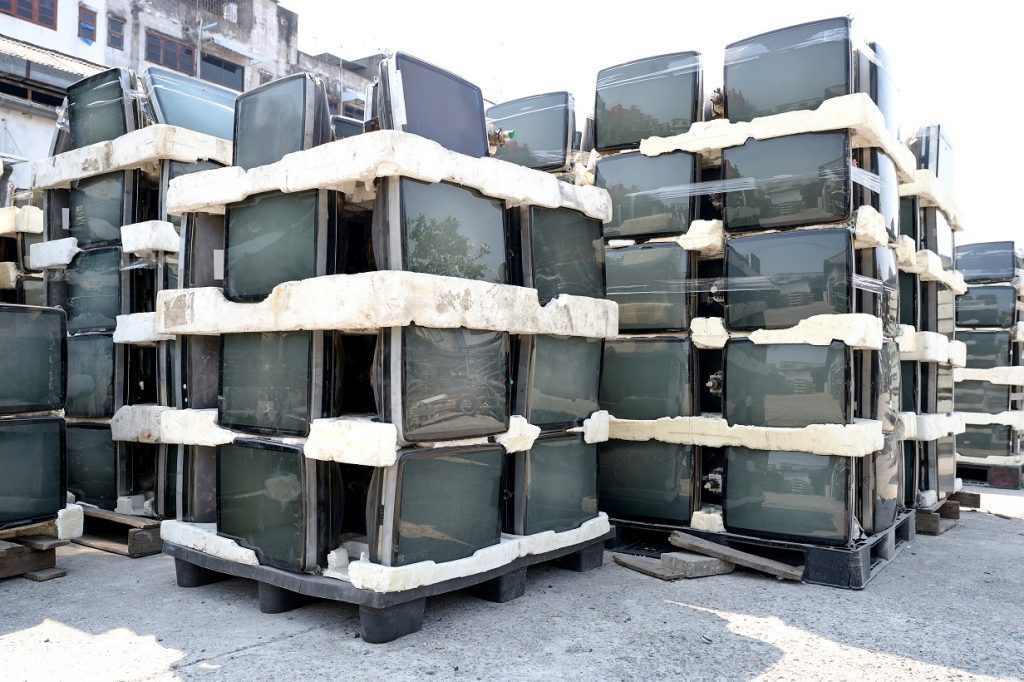
Proposed Regulations Offer Revised CRT Glass Disposal Options

Written by: Joe Mangiardi, NES, Inc.
 DTSC has proposed finalizing CRT glass disposal regulations to address the problem of waste CRTs and CRT-containing devices piling up.
DTSC has proposed finalizing CRT glass disposal regulations to address the problem of waste CRTs and CRT-containing devices piling up.
CRT Glass Disposal in California
On July 6, 2018 the California Department of Toxic Substances Control (DTSC) opened the public comment period for proposed regulations that would set management standards for CRT glass disposal. Emergency regulations have been serving as a placeholder while DTSC hoped for a viable recycling innovation to emerge. Given that no such effective process has come along, the intention behind finalizing these rules is to ensure that waste cathode ray tube (CRT) glass is managed as safely as practicable given associated processing and disposal costs and the lingering abundance of CRT glass-containing devices still awaiting their final fate.
The public comment period for this legislation, DTSC reference number R-2011-03, ends August 20, 2018. Click here for information on being involved in the rulemaking process.
CRT Glass Disposal: Background and History
In 2016 temporary emergency regulations had been instated for the third consecutive two-year period, allowing for CRT glass disposal in certain classes of landfills. But it was becoming clear that something more long-term would soon need to be figured out.
NES outlined the CRT glass disposal problem in the May 2017 article CRT Glass Landfill Disposal Likely to Continue.
Much of the glass in CRT devices, commonly televisions and computer monitors, contains lead, a substance toxic to humans (other hazardous constituents such as mercury and cadmium can also be present). CRTs are made up of CRT panel glass (non-leaded) and CRT funnel glass (leaded), with frit glass binding them together. Any elements of end-of-life CRT devices containing lead above certain thresholds must be treated as hazardous waste.
 Millions of pounds of abandoned CRTs await safe and effective disposal options.
Millions of pounds of abandoned CRTs await safe and effective disposal options.
The Electronic Waste Recycling Act of 2003 (EWRA) authorized the Department of Resources Recycling and Recovery (CalRecycle—then known as the California Integrated Waste Management Board) to set up a fees and cost reimbursement system to promote the compliant collection and recycling of electronic waste. This system consists of a point-of-sale fee paid by the consumer and a per-pound recycling subsidy for facilities. The emergency regulations have been designed so that CRT recyclers can participate in the EWRA recycling program with the proper level of oversight, which is better for the health and safety of citizens and the environment.
In years past, the practice had been to recycle the glass for reuse; however, beginning in 2006, changes in technology (flat screen televisions and computer monitors) flattened the demand for recycled CRT glass to be used for new products while simultaneously effecting a dramatic increase in the amount of CRT glass being disposed of. It was no longer financially feasible for facilities engaged in the collection and/or recycling of CRT glass-containing devices to process these materials. Eventually it became apparent to DTSC that much of the CRT glass disposed of by California citizens was either piling up at recycling and lead smelting facilities in California or being illegally sent to other states (with much likely shipped overseas).
CRT Glass Disposal Under Proposed Regulations
The proposed regulations would make some modifications to the emergency regulations, but they would continue to allow for most of the wider scope of CRT glass disposal options.
What the emergency regulations had termed a Class I landfill would now be referred to as a permitted hazardous waste disposal facility, and the terms Class II landfill and Class III landfill would be replaced by CRT panel glass approved landfill. The proposed regulations would allow universal waste handlers to accept CRT devices for the purpose of disposal under Title 22 of the California Code of Regulations (CCR), Chapter 23. Importantly, such facilities would not be required to obtain a permit for accepting, treating, or storing hazardous waste.
However, universal waste handlers who dispose of CRTs and CRT glass do become hazardous waste generators and must comply with applicable regulations (Chapters 12-16, 18, 20, and 22 from 22 CCR, Division 4.5). As stated in the DTSC 45-day public notice document, these requirements for California generators of hazardous waste include “notifying DTSC, obtaining an EPA ID number, transporting on a manifest using a registered hazardous waste transporter, and disposing at a permitted hazardous waste disposal facility.”
If a universal waste handler separates the CRT funnel glass (the leaded portion) from the panel glass, then that handler would be able to dispose of the panel glass at a CRT panel glass approved landfill as long as the panel glass:
- Has been tested to prevent funnel glass or contaminated panel glass from unintentionally entering the nonhazardous waste landfill
- Is determined not to be a Resource Conservation Recovery Act (RCRA) hazardous waste
- Does not exceed Soluble Threshold Limit Concentration (STLC) thresholds for toxicity
- Only exhibits a characteristic of hazardous waste for toxicity by exceeding Total Threshold Limit Concentration (TTLC) thresholds (if the TTLC is exceeded for barium only, then it is not considered to be a waste)
- Does not exceed the TTLC for lead of 30,000 mg/kg (3%)
- Meets Land Disposal Restriction treatment standards
- Is not comingled with funnel glass
A nonhazardous waste landfill can only accept CRT panel glass if it has been authorized to do so by the Regional Water Quality Control Board. The determination to allow for CRT glass disposal in this way was reached after DTSC concluded that the option will not result in hazardous materials leaching into the soil and contaminating drinking or surface water—additionally, DTSC mentions that this ruling reflects the lack of tractable recycling options for panel glass.
 The CRT is extracted from the CRT device and processed by separating the panel glass from the funnel glass.
The CRT is extracted from the CRT device and processed by separating the panel glass from the funnel glass.
The proposed regulations would require universal waste handlers who transport CRT glass to a disposal facility to ensure that the materials are properly recycled, treated, and/or disposed of by documenting—and retaining documentation on-site—all intermediate and final destinations of the waste. Documentation would also include contractual information between the universal waste handler and the facilities to which the CRT glass or CRT devices are sent. If sending the waste out of state, more detailed documentation would be required such as dates, quantities, and confirmation receipts from the out-of-state facilities. These additional measures are meant to ensure sufficient oversight by California recyclers and to make them ultimately responsible for the fate of the waste.
Some options for CRT glass disposal from the original emergency regulations have been rejected. Recycling using the excluded recyclable material (ERM) exclusion from Section 25143.2 of the Health and Safety Code (HSC) would not be permissible; only CRT glass manufacturing and lead smelting would be allowed. Articles 9 and 10 of the emergency regulations were associated with the ERM allowances and so have also been rejected. DTSC explains that the rejection of rules permitting CRTs to be managed as ERM is due to recyclers neither being able to identify any benefit to this option nor having any data on the end product.
 Countless pallets of CRTs with no cost-effective and legal means of disposition fill facility lots across the country.
Countless pallets of CRTs with no cost-effective and legal means of disposition fill facility lots across the country.
CRT Glass Disposal Regulations: Anticipated Benefits & Cost Impacts
DTSC cites various benefits to the proposed rules. Under universal waste management standards, CRT recyclers in California would be able to collect, treat, and process CRT glass that is bound for disposal in qualifying landfills. These recyclers would have to properly label, manifest, and transport CRTs and pay hazardous waste disposal fees, but they would avoid having to obtain a hazardous waste facility permit as well as having to pay annual facility fees. The ability to dispose of nonhazardous CRT panel glass in certain landfills will also reduce costs. And possibly most significantly, the DTSC expects the regulations to provide a “safe and effective disposition option for this large volume hazardous waste” that will “serve to deter improper management and prevent the stockpiling and abandonment of CRTs and CRT glass in California, other states, and abroad” (DTSC 45-day public notice document, pp. 10-11).
DTSC has determined that, if enacted, the regulations would not adversely financially impact schools, federal funding, California’s economy, housing, private citizens, or businesses. It is thought that the regulations may even lead to job creation.
References:
DTSC Information Page: How to Be Involved in the Rulemaking Process
DTSC 45-Day Public Notice and Comment Period Publication: Disposition Options for Universal Waste Cathode Ray Tubes (CRTs) and CRT Glass
DTSC Publication: Initial Statement of Reasons (ISOR)
22 CCR, Chapter 23: Standards for Universal Waste Management
